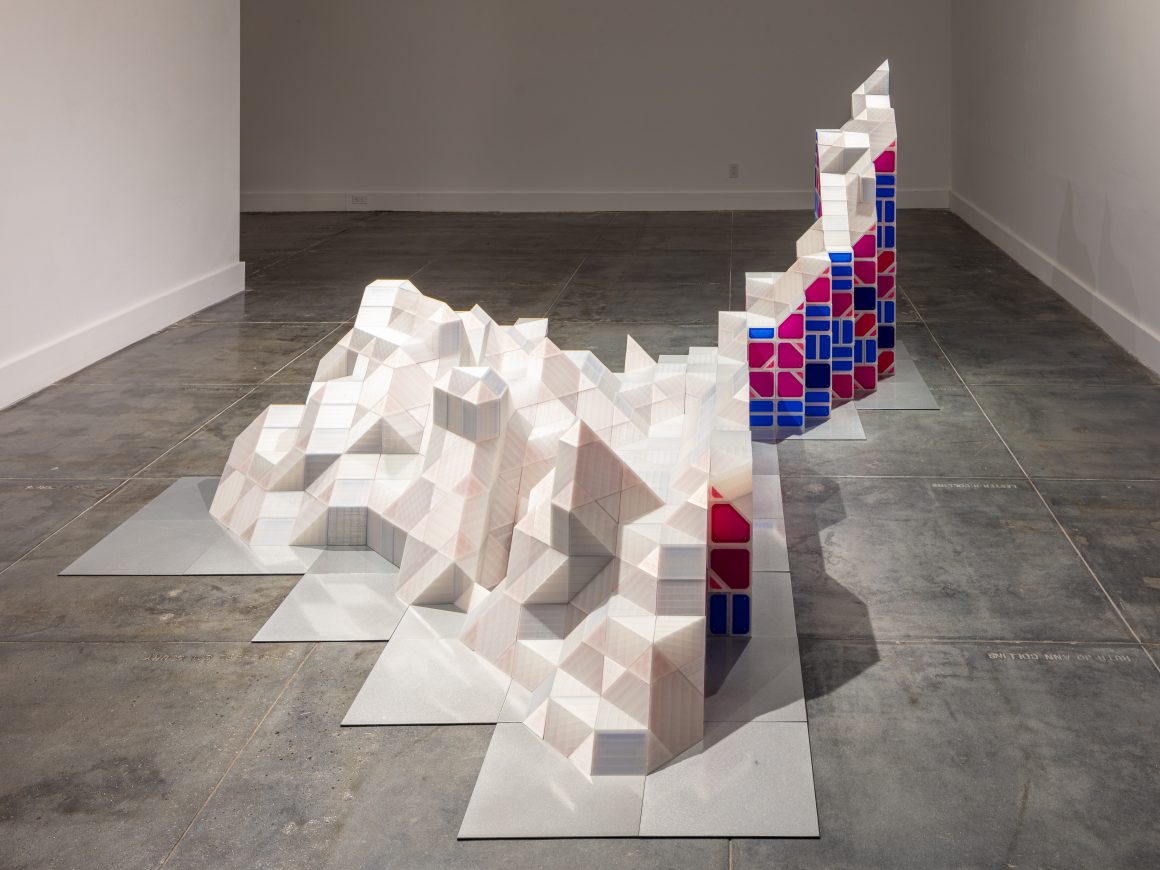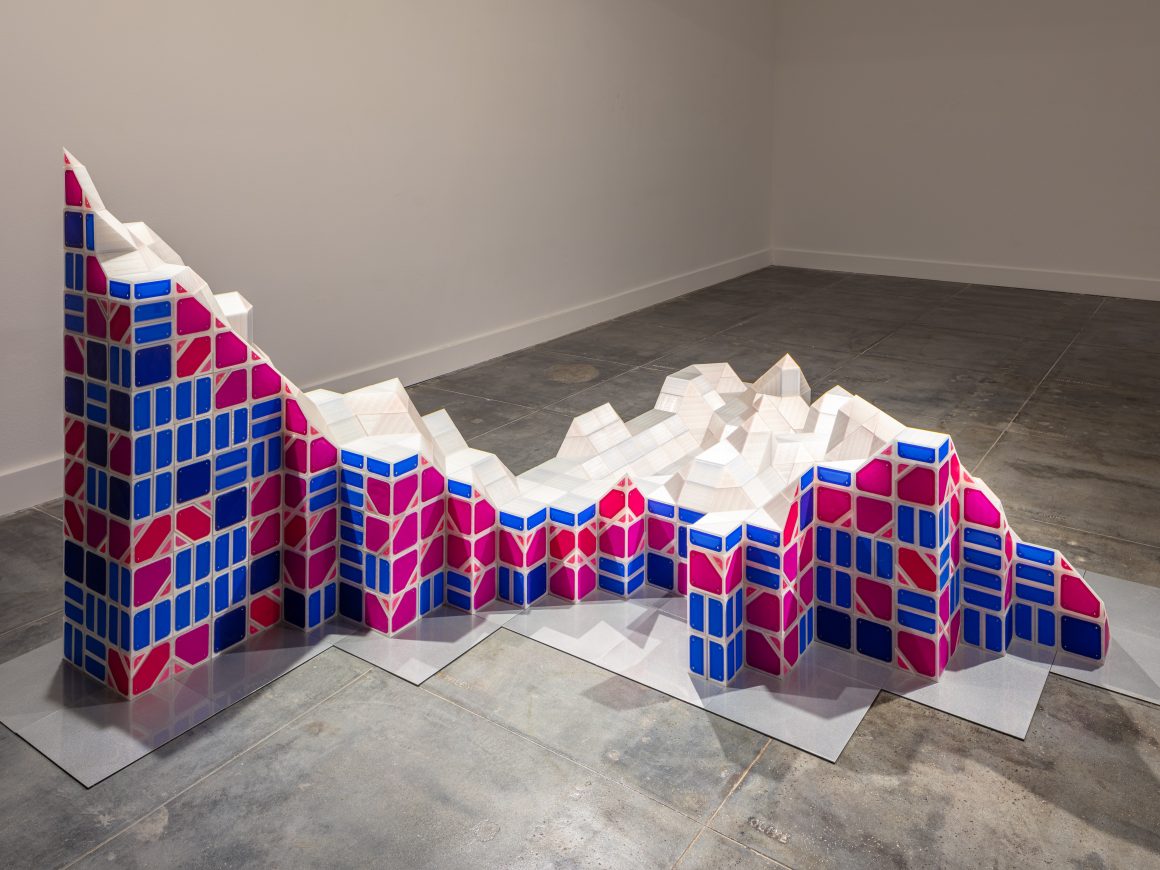Laguna Beach, California has frequently been characterized—in word and image—by its vertiginous coastal topography. In 1936, Richard Halliburton observed the sublime qualities afforded by this geology and proceeded to build his Hangover House to take full advantage of them. A watershed is a bounded area of land that captures precipitation and funnels it toward a single basin. As the latest experiment in my Marching Cubes project—sculptures assembled from a modular set of over 5,000 3D printed components, derived from an algorithmic procedure of the same name—I have created the geological formation that defines Laguna and inspired Halliburton: the erosive watersheds that flow from the headwaters of Aliso Creek and across Laguna’s city limits to the ocean. Equally, a watershed is an event that marks a turning point. Hangover House represented Halliburton’s turn toward a more situated existence. Similarly, Watershed #1 represents a turn towards site-specificity, a compelling new direction for both Marching Cubes and my creative practice more generally.
Floor assembly from modular components. 3D-printed PLA plastic, neodymium magnets, cold-rolled steel plate. 50″H x 96″W x 120″L. Components 2016-2019, assembly 2019.
Commissioned as part of Word and Image in Dialogue, Laguna Art Museum, Laguna Beach, January 18 – 26, 2020.

